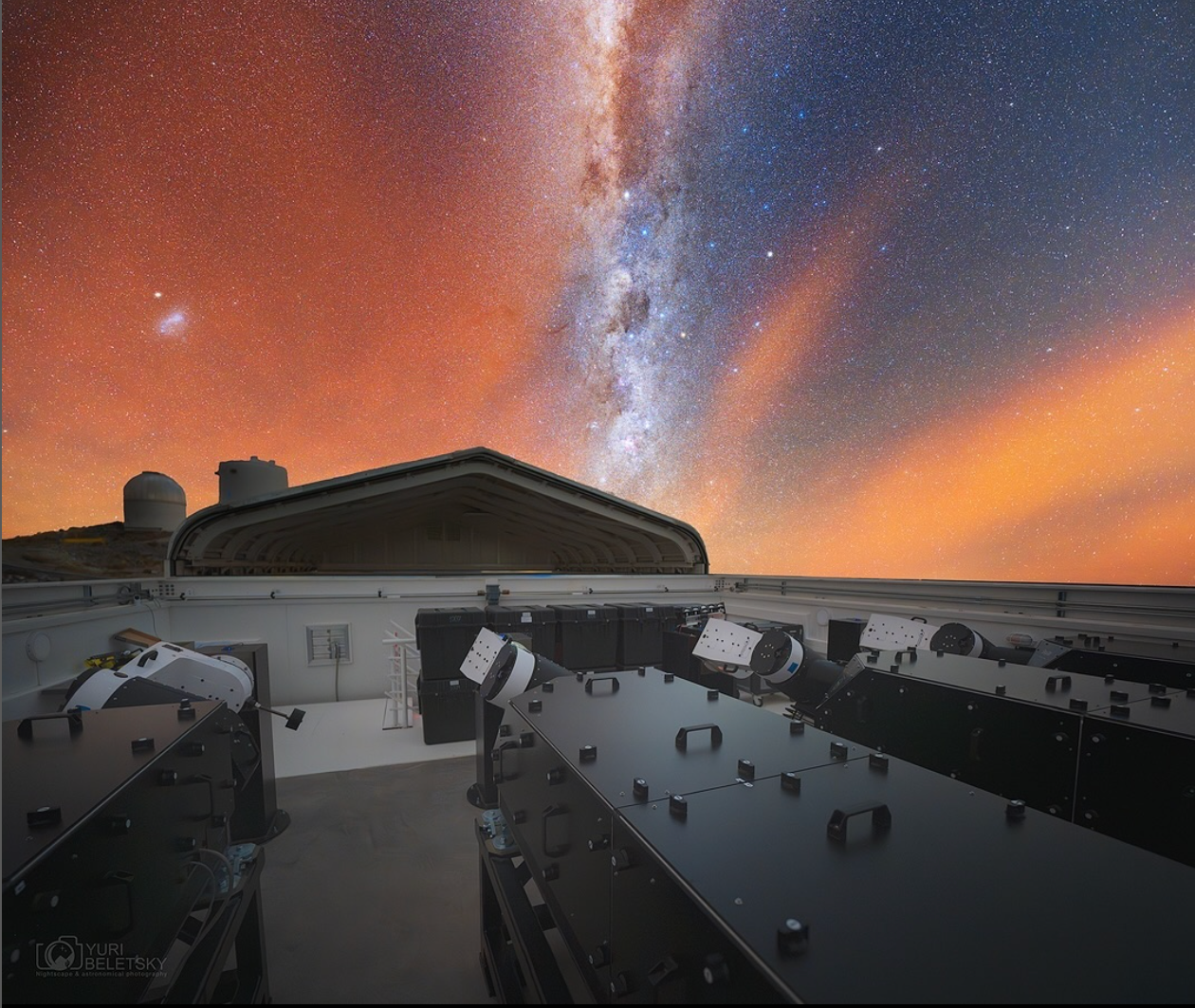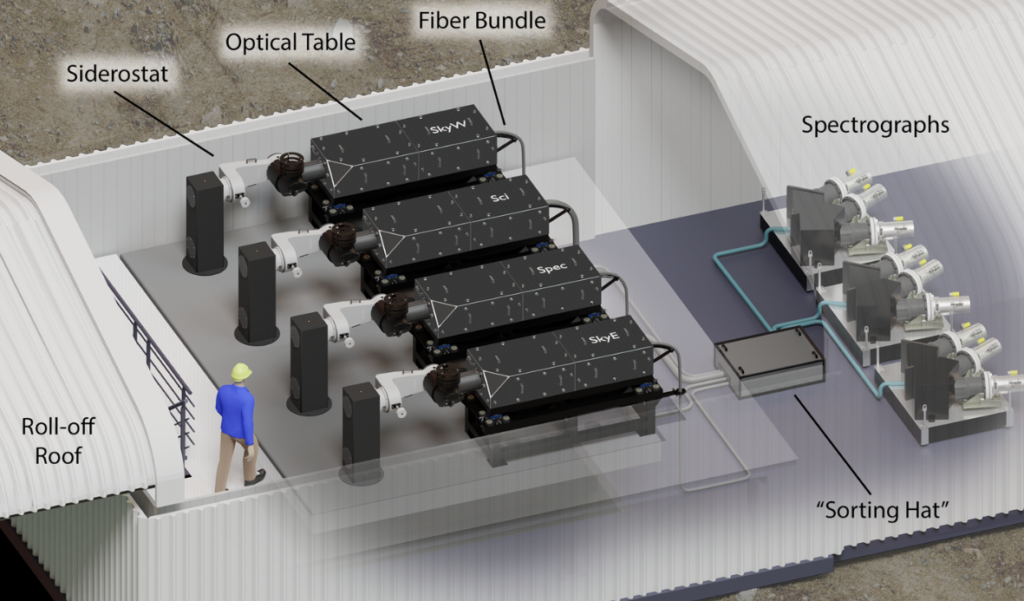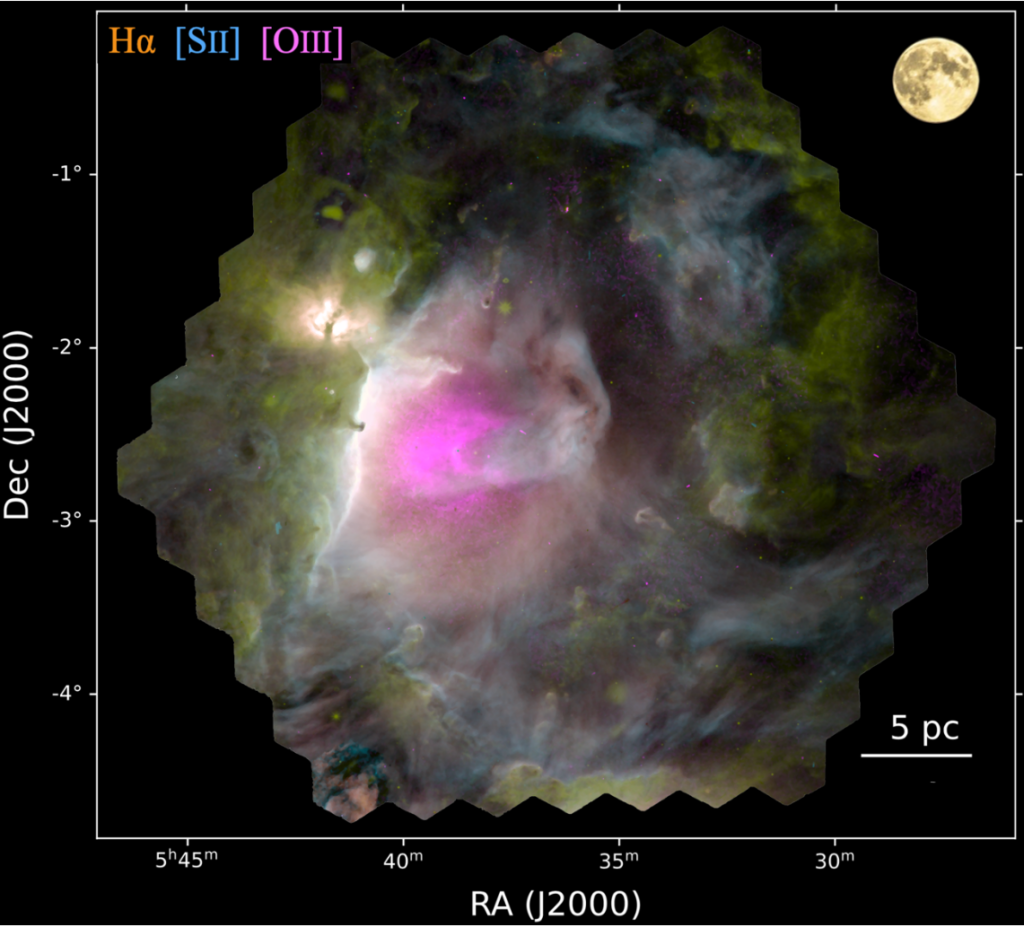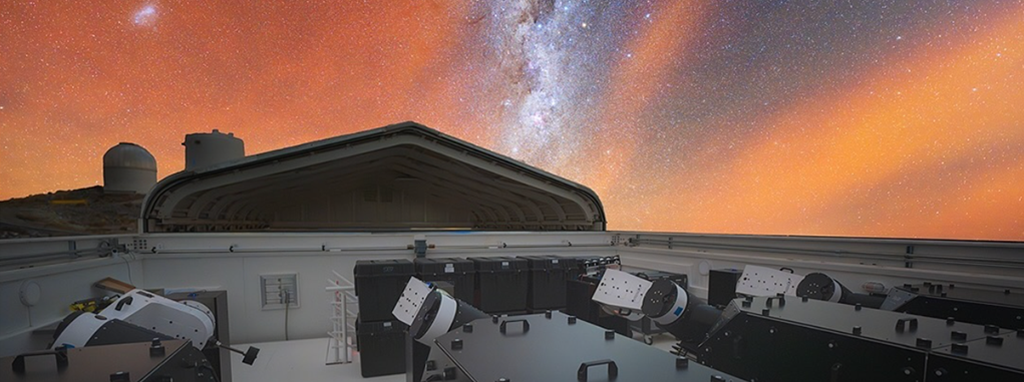The Sloan Digital Sky Survey (SDSS) is embarking on its most innovative spectroscopic survey yet of our Milky Way: creating a comprehensive map of the interstellar material in our Galaxy.

Image Credit: Yuri Beletsky (Las Campanas Observatory)
“Our observing robots have been working hard for a few years already. Now, they are helping us scan the sky in a whole new way,” said Dhanesh Krishnarao, an Assistant Professor of Physics at Colorado College and a member of the team. “I can’t wait to see what we learn about our home in the Milky Way.”
Using an innovative telescope system at Las Campanas Observatory in Chile’s Atacama Desert, the SDSS’ Local Volume Mapper (LVM) project has begun its fully robotic survey operations.
“Our Milky Way is more than just the sum of its stars,” explains Dr. Niv Drory, the LVM Program Head. “The space between stars is filled with interstellar gas and dust that plays a crucial role in how galaxies evolve. Stars enrich this material with heavy elements through stellar winds and supernova explosions, which later become part of new stars, planets – and even living things like us.”
Most modern telescopes have huge mirrors that focus on small patches of sky to see faint galaxies very far away. But to understand the connection between stars and their environment, astronomers need complementary telescopes that can observe nearby gas in great detail, across huge areas of the sky here in our own Milky Way. This requirement led to a unique design of the LVM telescopes.

Image Credit: Tom Herbst (Max Planck Institute for Astronomy)

Image Credit: Kathryn Kreckel (Heidelberg University)
Contacts
Dhanesh (DK) Krishnarao
Colorado College
Director, SDSS Faculty and Student Team (FAST) Program
+1 (719) 389-6218
dkrishnarao@coloradocollege.edu
Juna Kollmeier
Survey Director, Sloan Digital Sky Survey
jak@carnegiescience.edu
Niv Drory
University of Texas
Local Volume Mapper Program Head
drory@astro.as.utexas.edu
Evelyn Johnson
Universidad Diego Portales, Chile
evelynjohnston.astro@gmail.com
Kathryn Kreckel
Heidelberg University, Germany
Local Volume Mapper Survey Operations Scientist
kathryn.kreckel@uni-heidelberg.de
Guillermo Blanc
Carnegie Institution for Science
gblancm@carnegiescience.edu
With this new LVM facility, SDSS-V has set out to make a global map of the Milky Way’s interstellar material. The formal survey start of LVM was at the end of 2023. LVM does not require personnel onsite for normal operations – but since the beginning of commissioning, dozens of members of the international team have taken turns each night virtually overseeing the telescope observations.
These observers include both students and faculty members spread across the world, allowing them to conduct observations at “comfortable” times despite it being the middle of the night in Chile.
As Evelyn Johnston, the LVM Survey Operations Scientist, points out, “The close involvement of students in the commissioning, testing, and initial operations of the system is a particularly unique aspect of SDSS-V that is helping to train the next generation of astronomers in survey-based astronomy.”
Now, with fully robotic observations students and faculty can drop in to monitor the telescopes anytime, but don’t need to stay up all night observing.
“The Local Volume Mapper will let us uniquely link individual stars to their impact on the surrounding gas, a key missing piece in understanding how galaxies grow and evolve,” says Kathryn Kreckel, lead author of the first science paper from the project (Kreckel et al. 2024).
Like all SDSS data, LVM data will be released publicly, starting with an initial taste to be released in summer 2025 to familiarize astronomers with this unique kind of data at this scale.
One of the major ways in which SDSS-V is helping to train the next generation, and also broadening participation in astronomy, is through its Faculty and Student Team (FAST) program. FAST provides funding and mentorship for students and faculty from minority-serving institutions who would otherwise be unable to join the survey. FAST team members become full members of the SDSS collaboration.
Krishnarao, who also leads the FAST program, is excited for the LVM data, and wants to make sure that all astronomers benefit from it. “LVM data presents a new way to understand our Milky Way,” Krishnarao says, “and our FAST teams will be right there with us from the beginning.”
About the SDSS
Funding for the Sloan Digital Sky Survey V has been provided by the Alfred P. Sloan Foundation, the Heising-Simons Foundation, the National Science Foundation, and the Participating Institutions. SDSS acknowledges support and resources from the Center for High-Performance Computing at the University of Utah. SDSS telescopes are located at Apache Point Observatory, funded by the Astrophysical Research Consortium and operated by New Mexico State University, and at Las Campanas Observatory, operated by the Carnegie Institution for Science. The SDSS web site is www.sdss.org.
SDSS is managed by the Astrophysical Research Consortium for the Participating Institutions of the SDSS Collaboration, including Caltech, the Carnegie Institution for Science, Chilean National Time Allocation Committee (CNTAC) ratified researchers, The Flatiron Institute, the Gotham Participation Group, Harvard University, Heidelberg University, The Johns Hopkins University, L’Ecole polytechnique fédérale de Lausanne (EPFL), Leibniz-Institut für Astrophysik Potsdam (AIP), Max-Planck-Institut für Astronomie (MPIA Heidelberg), Max-Planck-Institut für Extraterrestrische Physik (MPE), Nanjing University, National Astronomical Observatories of China (NAOC), New Mexico State University, The Ohio State University, Pennsylvania State University, Smithsonian Astrophysical Observatory, Space Telescope Science Institute (STScI), the Stellar Astrophysics Participation Group, Universidad Nacional Autónoma de México, University of Arizona, University of Colorado Boulder, University of Illinois at Urbana-Champaign, University of Toronto, University of Utah, University of Virginia, Yale University, and Yunnan University.
The Faculty and Student Team program is funded by the Sloan Foundation and through National Science Foundation award AST-2425222.

